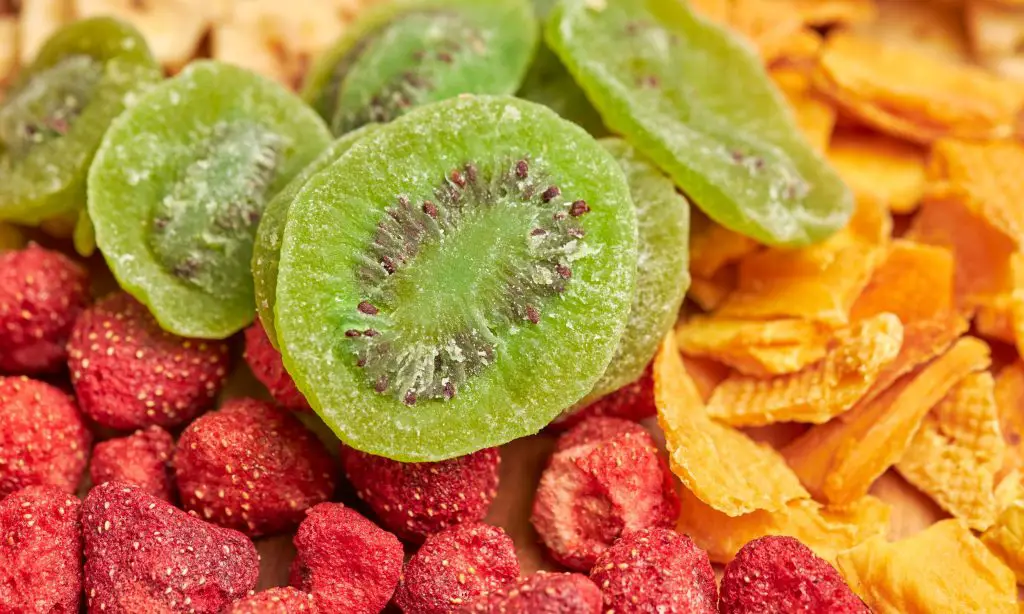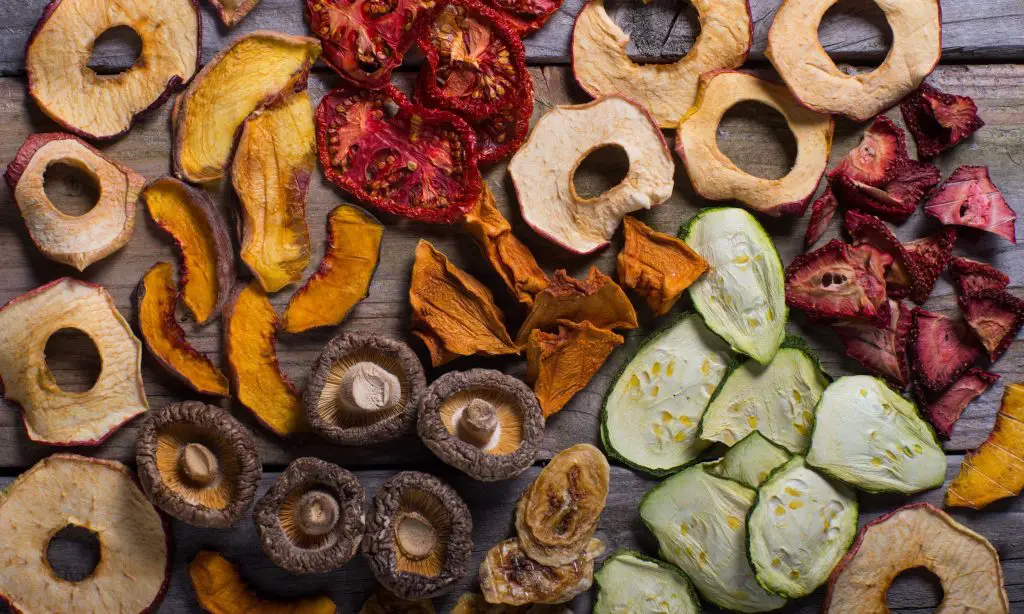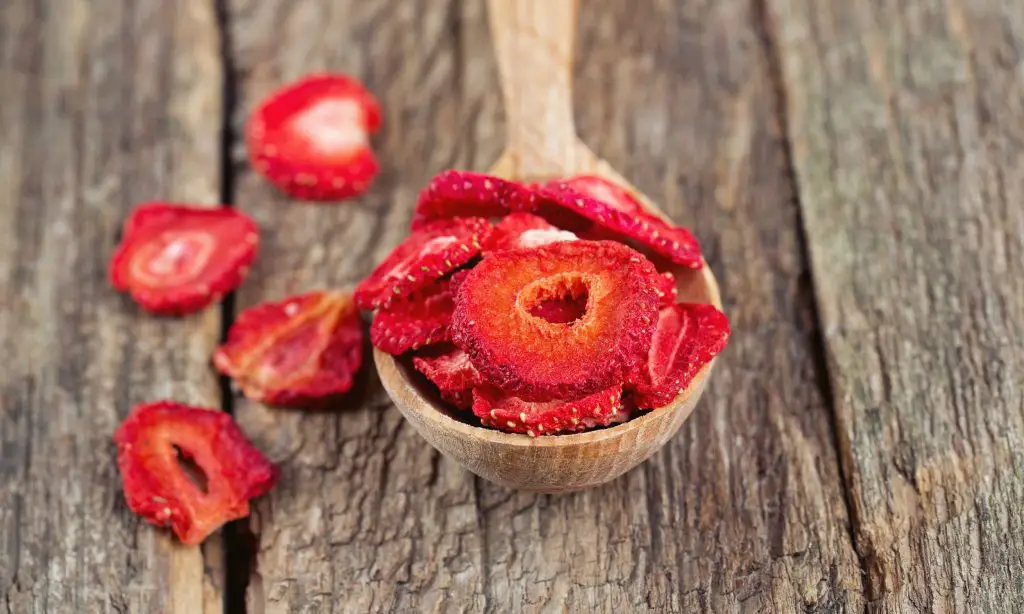Dehydrating Food Basics
Dehydrating food is a great way to preserve it for longer periods of time. By removing the water content from food, you can prevent mold and bacteria from growing and lengthen the shelf life significantly.
Plus, dehydrated foods are lightweight and easy to store, making them ideal for backpacking and other outdoor activities. In this post, we’ll show you how to dehydrate food at home using a dehydrator or oven. We’ll also share some tips on what foods work best for dehydration.
Disclosure: Some of the links below are affiliate links, meaning, at no additional cost to you, I will earn a commission if you click through and make a purchase.
Dehydrating food in the 20 and 21st Century
In the 20th and 21st centuries, dehydrating food has become an increasingly popular way of preserving ingredients. It offers an easy and economical method to both store food and make delicious snacks like fruit leathers, trail mix, beef jerky, and veggie chips.
Dehydrate fruits by cutting them into slices or cubes, season vegetables with herbs and spices before dehydrating for extra flavor, or for a low-sugar option, try coconut flakes or banana chips.
Plus, it’s much better than eating processed sugary snacks that contain preservatives – with dehydrated food you get healthful snacking with concentrated flavors.
What is Food Dehydration
Food dehydration is an age-old technique and involves slowly removing the moisture from food so that it can be stored and preserved. Dehydration works by reducing water activity, which prevents the growth of any undesirable microorganisms in the food as well as delaying spoilage that’s normally caused by bacteria, yeast and molds.
It can also improve flavor enhancements, remove odors, and enhance palatability. Food dehydration offers a convenient, fast and efficient way to preserve food – especially when you don’t have access to refrigeration – leaving you with highly nutritious edibles for weeks or even months!
Whether it’s crunchy fruits for snacks or chunkier foods like jerky for camping trips, food dehydration does an amazing job at keeping our sustenances safe for consumption.

What Type of Foods can be Dehydrated
A wide range of foods can be dehydrated, including fruits, vegetables, meats, herbs, and even dairy products. Fruits are incredibly popular for dehydration as they make great snacks – think apple chips or banana chips – with a deliciously satisfying crunch.
Vegetables can take on a totally different texture from dehydration and are great for adding some zing to meals – both before and after the rehydration process.
Many people also dehydrate meat for jerky, which is packed with flavor and typically does not require refrigeration.
Herbs can be dried or frozen, but dehydration often gives them a more intense flavor than freezing.
Dairy products such as cheese or yogurt can also be dehydrated and are flavorful additions to many recipes!
What is the Nutritional Value of Dehydrated Food
Besides being convenient, dehydrated foods are also nutritious. For starters, the drying process helps food to keep large amounts of its vitamins and minerals intact; typically, some 80-90% is retained.
Plus, since the water content has been removed from these foods, they’re typically packed with a higher concentration of calories and carbohydrates per ounce or serving than their fresh counterparts—perfect for those times you need a bit extra energy on-the-go.
Lastly, dehydrated fruits are an excellent source of fiber, which helps with digestion and keeps us feeling full longer.

Pros and Cons of an Electric Dehydrator
Electric dehydrators can be extremely useful gadgets in any kitchen, especially if you’re looking to preserve food or reduce food waste. They make the process of drying fruits and vegetables super easy and convenient – all you need to do is switch it on and leave it to work its magic!
Of course, there are some pros and cons to consider before making the investment. On the pro side, they provide a controlled environment for drying foods so that everything comes out consistent every time.
Additionally, electric dehydrators are usually very energy efficient as compared to other forms of food preservation.
However, electric dehydrators tend to cost more upfront than traditional methods like sun-drying or air-drying. Some models also take up quite a bit of counter or cupboard space if you plan to keep them set up most of the time.
If you’re someone who loves preserving food, an electric dehydrator might be a great option for you – just make sure to think about your budget and available storage space first!
We LOVE our Excalibur Electric Food Dehydrator.
How do Dehydrators Compare to Other Preserving Methods
Dehydrators are just one of the many methods that can be used to preserve food. Compared to other methods, dehydrators provide many advantages, such as being able to remove enough moisture from food so it can last longer but still keep its incredible flavor and nutritional value.
Dehydrators also give users more control over the drying process itself, allowing for different settings based on what type of food and how much moisture is present.
Many people don’t realize that dehydrated food actually tastes better than canned or frozen foods, making it a delicious and nutritious way of preserving perishable items.
The convenience and effectiveness of a dehydrator truly sets it apart from other preserving methods; it’s an essential tool for a modern kitchen!

Ready to Learn More About Dehydrating?
- How to Dehydrate Basil
- What is the Best Dehydrator
- How to Dehydrate Apples
Did you enjoy this article? Want to hear more? Stay in touch! Sign up below to receive weekly tips and inspiration for your homestead.
[convertkit form=3733554]
